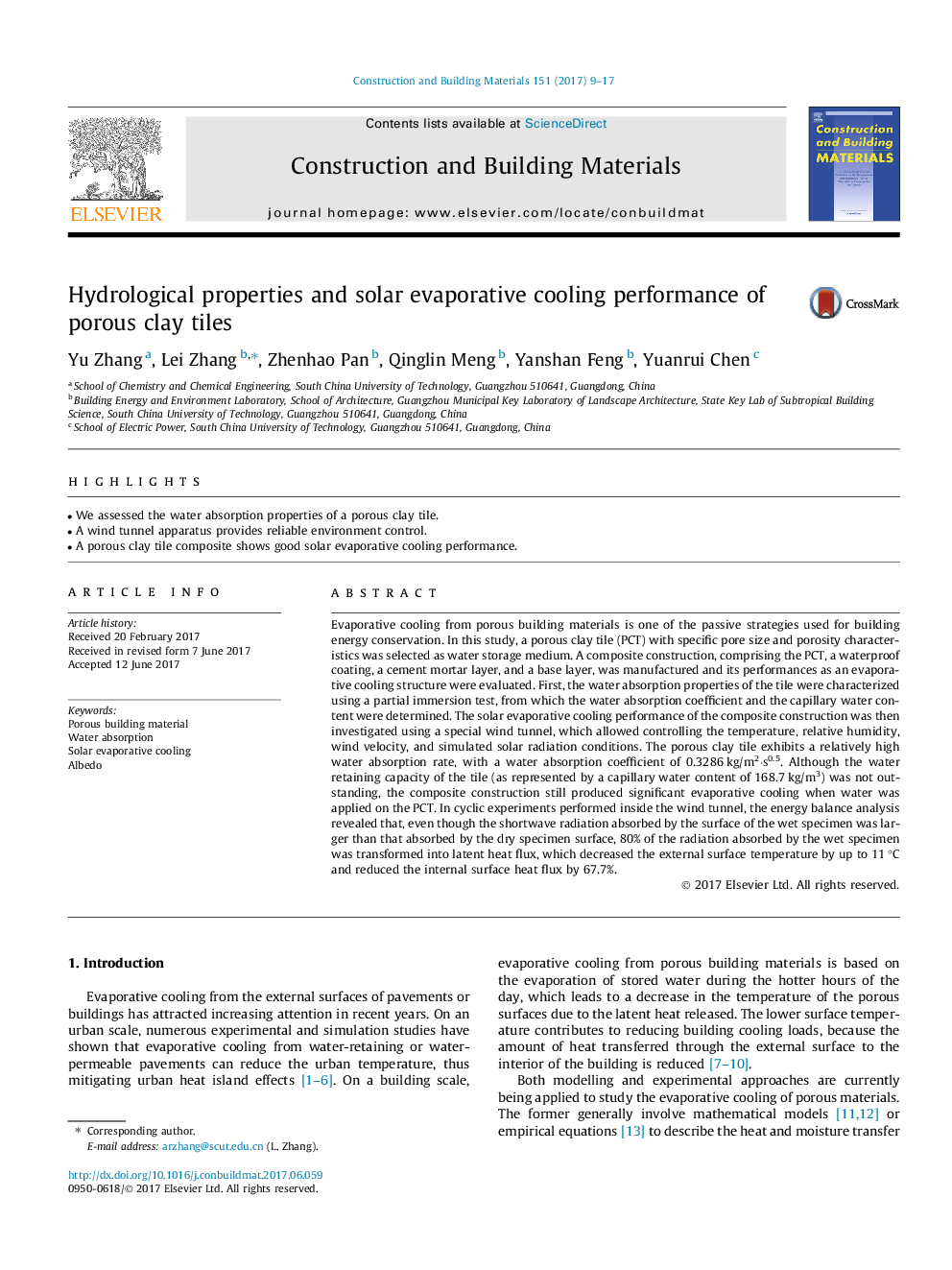| کد مقاله | کد نشریه | سال انتشار | مقاله انگلیسی | نسخه تمام متن |
|---|---|---|---|---|
| 4918157 | 1428755 | 2017 | 9 صفحه PDF | دانلود رایگان |
عنوان انگلیسی مقاله ISI
Hydrological properties and solar evaporative cooling performance of porous clay tiles
ترجمه فارسی عنوان
خواص هیدرولوژیکی و عملکرد خنک کننده خنک کننده خنک کننده کاشی های خاک رس متخلخل
دانلود مقاله + سفارش ترجمه
دانلود مقاله ISI انگلیسی
رایگان برای ایرانیان
کلمات کلیدی
مصالح ساختمانی متخلخل، جذب آب، خنک کننده تبخیر خورشیدی، آلبدو،
موضوعات مرتبط
مهندسی و علوم پایه
سایر رشته های مهندسی
مهندسی عمران و سازه
چکیده انگلیسی
Evaporative cooling from porous building materials is one of the passive strategies used for building energy conservation. In this study, a porous clay tile (PCT) with specific pore size and porosity characteristics was selected as water storage medium. A composite construction, comprising the PCT, a waterproof coating, a cement mortar layer, and a base layer, was manufactured and its performances as an evaporative cooling structure were evaluated. First, the water absorption properties of the tile were characterized using a partial immersion test, from which the water absorption coefficient and the capillary water content were determined. The solar evaporative cooling performance of the composite construction was then investigated using a special wind tunnel, which allowed controlling the temperature, relative humidity, wind velocity, and simulated solar radiation conditions. The porous clay tile exhibits a relatively high water absorption rate, with a water absorption coefficient of 0.3286 kg/m2·s0.5. Although the water retaining capacity of the tile (as represented by a capillary water content of 168.7 kg/m3) was not outstanding, the composite construction still produced significant evaporative cooling when water was applied on the PCT. In cyclic experiments performed inside the wind tunnel, the energy balance analysis revealed that, even though the shortwave radiation absorbed by the surface of the wet specimen was larger than that absorbed by the dry specimen surface, 80% of the radiation absorbed by the wet specimen was transformed into latent heat flux, which decreased the external surface temperature by up to 11 °C and reduced the internal surface heat flux by 67.7%.
ناشر
Database: Elsevier - ScienceDirect (ساینس دایرکت)
Journal: Construction and Building Materials - Volume 151, 1 October 2017, Pages 9-17
Journal: Construction and Building Materials - Volume 151, 1 October 2017, Pages 9-17
نویسندگان
Yu Zhang, Lei Zhang, Zhenhao Pan, Qinglin Meng, Yanshan Feng, Yuanrui Chen,
